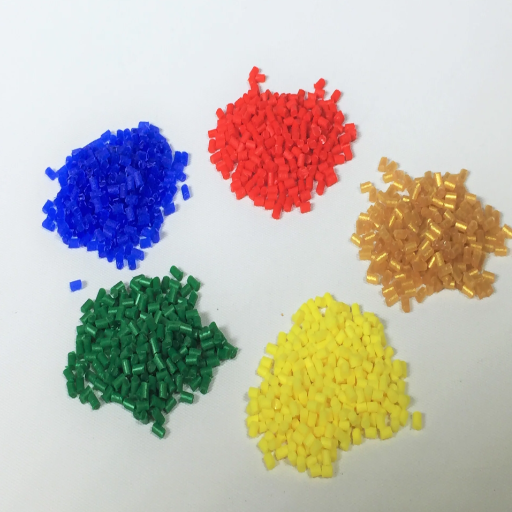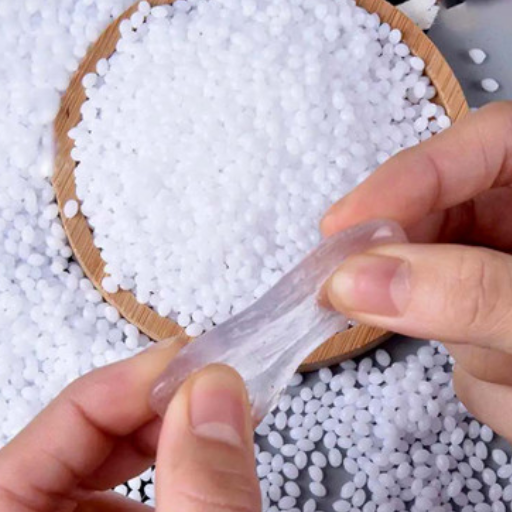The market for manufacturing plastic granules surged over the last decade owing to their increased consumption in packaging, construction, automotive, and electronic industries. This blog aims to identify the primary drivers of this agile market, such as the new developments in recycling processes, innovations in eco-friendly materials, and heightened government policies. In addition to those trends, the industry grapples with other emerging obstacles, such as the overwhelming amount of plastic waste, modern-day environmental challenges, and rapidly changing consumer preferences. Despite these daunting challenges, there are ample opportunities to tackle these issues with sustainable innovation. In this article, we will evaluate the more granulated view of the state of the industry and the landscape analysis and provide recommendations for the anticipated growth. Stay tuned as we reveal the intricacies and possibilities of the burgeoning world of plastic granules.
What is the Plastic Granule Market?
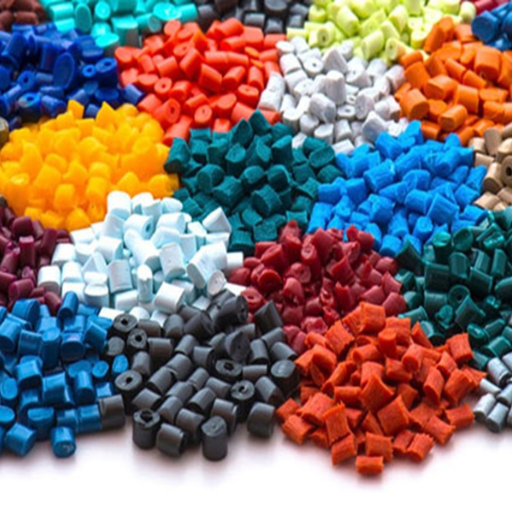
The plastic granule market includes the processes of manufacturing, selling, and utilizing small cylindrical pieces of plastic known as granules which serve as primary materials for producing various products. These granules are formed through polymerization and are utilized in packaging, automotive, construction, consumer goods, and other industries. The market polymer granules manufacture is of strategic importance in the world economy because it supplies the essential material needed to make plastic products, largely due to the vying competition for strong, adaptable, and pleasingly basified components.
Understanding the Basics of Plastic Granules
Plastic granules are characterized by several technical parameters that define their suitability for specific uses. These include:
- Material Type: Depending on the product to be manufactured, various grades of plastic granules are used which include: polyethylene(PE), polypropylene (PP), polystyrene (PS), and polyvinyl chloride (PVC). Each type has its own characteristics such as flexibility, durability, or heat and chemical resistive properties.
- Density: The density (g/cm³) of the plastic granules affects the weight and strength of the final product. For example, the density of high-density polyethylene (HDPE) is 0.93 – 0.97 g/cm³ which makes it suitable for rigid containers.
- Melt Flow Index (MFI): Also known as melt flow rate, MFI indicates the degree of easiness to which granules can be processed into different shapes. It is usually expressed in grams per 10 mins at a certain temperature and pressure. A typical value of 2-20 g/10 min is MFI for injection molding applications.
- Moisture Content: The amount of moisture in granules must be controlled as too much moisture level will result in defects during the production process. For many applications, granules must be dried to less than 0.1% moisture content to ensure quality.
- Additives: To improve the functionality of the granules or make them suitable for specific colors and textures, certain additives are incorporated which include: stabilizers, plasticizers and colorants.
Applications of Plastic Granules
As a plastic material, each type of plastic granule has its application, from extruded or blown into plastic films, bottles, automobile parts, pipes and storage containers. Their versatility, along with the addition of certain substances and adjustments to certain parameters, fuels their wide application in various industries.
Diverse Types of Plastic Granules Available
According to their composition and properties, plastic granules are classified into several different types, each designed for particular applications. The most utilized include the following:
- Polyethylene (PE): Polyethylene is particularly useful in the form of films, bags and containers. Furthermore, due to its flexibility as well as its chemical resistance, it is highly valued. HDPE (High-Density Polyethylene) and LDPE (Low-Density Polyethylene) are specialized variants that are suited for packaging with different tensile strengths and applications.
- Polypropylene (PP): Polypropylene is famous for being tough and heat resistant, which makes it suitable for automotive parts. In addition, polypropylene is used in textiles as well as food containers. Being lightweight, it is also ideal for pressure vessels and other products that require high durability without bulk.
- Polyvinyl Chloride (PVC): Due to its high strength and resistance to corrosion, PVC granules are used in the making of pipes and window frames along with flooring. For soft tubing, medical tools and cables, flexible PVC is also used.
- Polystyrene (PS): Widely used for disposable cutlery, packing as well as insulation materials, polystyrene is available in rigid and foam form. The ease of molding polystyrene alongside its affordability ensures great value.
- Acrylonitrile Butadiene Styrene (ABS): Commercially available polystyrene and acrylonitrile are preferred in toy making, especially in LEGO blocks, complex housings, and other consumer goods. With it being impact-resistant and having an attractive glossy finish, ABS is well suited.
- Polyethylene Terephthalate (PET): The PET granulate is mainly utilized for manufacturing beverage bottles, food containers, and synthetic fibers. Its popularity in sustainable applications is also enhanced by its recyclability.
Every type of plastic granule serves specific industries and applications, which exemplifies their versatility and significance in contemporary manufacturing.
The Role of Plastic Granules in Various Industries
Due to their wide-ranging applications, cost, and durability, plastic granules are pivotal in many industries. They provide the basis from which a variety of products are made such as those for packaging, automobiles, and construction. For example, in the automotive sector, granules are utilized to manufacture lightweight and durable components that improve fuel efficiency and automobile performance. In the packaging industry PET granules are heavily relied upon to produce containers that are recyclable as well as environmentally friendly. Furthermore, plastic granules are used by the construction sector to make pipes, fittings, and insulation materials on account of their corrosion resistance and longevity. Plastic granules possess numerous features that not only allow them to fulfill the requirements of various processes but also aid in the creation of innovative sustainable solutions.
What is the Size of the Plastic Granules Market?
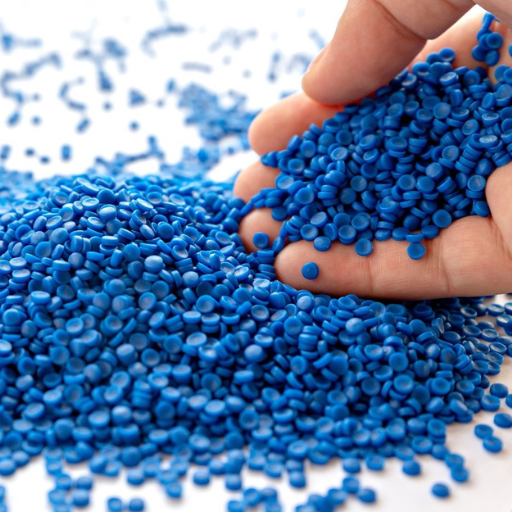
The buying and selling of plastic granules is a major industry that continues to expand at a consistent pace. The industry is projected to be in the billions due to the rising need for plastic in packaging, construction, automobiles, consumer goods, and other sectors. Urbanization and new technologies, along with the need for sustainable and recyclable materials, sustain further expansion of the market. Different regions are subject to distinct industrial applications and government regulations which influence market size and growth estimations by region.
Analyzing the Plastic Granules Market Size
According to my findings, the market of plastic granules is primarily influenced by the increasing requirements of portable and tough materials in significant segments such as automotive and packaging. The level of demand from these sectors, however, is further enabled on a global scale through urbanization and industrial growth. In addition, my top sources indicate that the Asia Pacific region is leading the market due to the heightened infrastructural development and expanding manufacturing base. On the other hand, Europe and NA are equally focusing on sustainable approaches and regulatory policies that fuel growth trends. All in all, the underlying drivers for the growth of the market remain strikingly balanced with the growing industrial activity and the continual pressure for sustainable recyclable plastic solutions.
Factors Driving the Market Growth
From my examination of the top resources, the acutely defined market drivers are advanced eco-friendly plastic solutions, increasing industrial demand, and government policies aimed at enhanced sustainability. The dominance of the Asia Pacific region stems from booming infrastructure projects and expanding manufacturing hubs while European and North American markets are emerging due to stronger environmental policies and a focus on recyclables. Engineering factors driving these parameters include material strength, recyclability levels, and reduced carbon emissions during the manufacturing process. All of which are critical to achieving industrial and environmental acceptance.
Emerging Trends in the Global Recycled Plastic Granules Market
The market for recycled plastic granules is growing quickly, correlating with the increase in environmental concern, new government policies, and improved recycling methods. Noteworthy changes include the rising demand for high-quality PCR plastic sourced from the packaging and automotive industries. The adoption of circular economy principles has enabled using recycled content in many production processes, thus further decreasing the consumption of virgin plastic.
The development of new recycling methods, such as chemical recycling of plastics, enhances the ability to recycle plastic waste. This method improves recycling rates and the quality of the materials produced, allowing the resultant materials to be used in applications with more exacting standards. Additionally, new technologies for sorting and purifying materials are enhancing the strength and uniformity of the granules produced.
In general, the market is projected to grow driven by increasing environmental regulations, sustainability policies by businesses, and the shift in preference from consumers toward green products. These forces together are poised to make recycled plastic granules central to addressing plastic waste challenges.
How Does the Recycled Plastic Granules Market Operate?
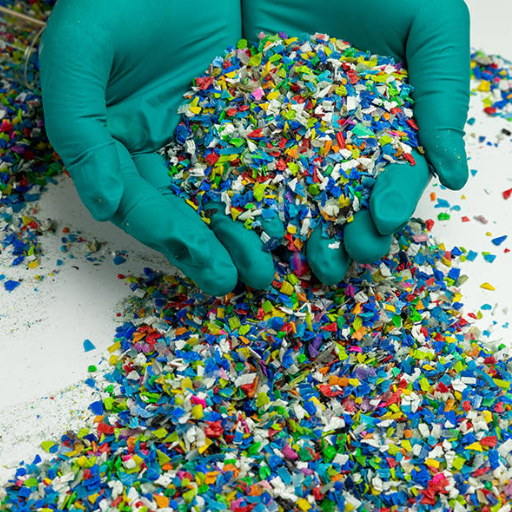
The market of recycled plastic granules functions within a network of system processes, beginning with a collection of plastic waste from homes, industries, and businesses. The waste is processed and decontaminated before being chopped into more manageable sizes. Subsequently, the plastics are shredded, melted, and remolded into granules which can be utilized as raw materials in the manufacture of new products. Participants in the market consist of granule-using manufacturers, waste management companies, and recycling facilities. The market is alleviated by the heightened demand for sustainable materials along with innovations in recycling technologies and helpful government policies.
Key Players in the Recycled Plastic Granules Market
The industry of producing recycled plastic granules is served by a few major companies concerned sustainability of the ecosystem and innovative developments. The prominent industry players include:
- Veolia – The company focuses on shredding plastic waste into a high-quality granule that can be used as raw material for granule molding. They are the leaders in waste management and recycling.
- Brightmark – This company is known for its revolutionary endeavors of converting plastic waste into usable products. They are also into producing clean granular substances and do so through advanced chemical recycling processes.
- Indorama Ventures – Indorama is one of the leading manufacturers of recycled plastic materials. The company specializes in recycling PET and supplies granules for the packaging industry and textiles with a strong focus on circular economy turns.
All of these companies are backed by state-of-the-art technology and industry influence, enabling them to formulate sustainable solutions for the parent earth, forming the future business prospects of the recycled materials industry.
Understanding the Recycling Process
The recycling of plastics goes through several important steps to prepare and repurpose the materials for future usage. The first step is collection and sorting, in which all plastics from households, businesses, and other sources are gathered and separated by type and resin code. Further sorting improvement can be achieved through the use of infrared scanners and other advanced sorting technologies. Section ‘Cleaning and shredding’ cleans plastics by removing excess impurities such as food residue, then breaking the plastic down into smaller flakes or granules.
This is followed by melting and reprocessing, in which the materials are melted down and formed into new products, pellets, or other products based on the type of plastic. While some facilities will reprocess plastic through shredding, others will engage in chemical recycling which breaks the plastic down into its molecular components, creating higher-quality raw materials. The final step is manufacturing which produces new textiles, packaging, and goods as hardware products from recycled plastics.
While this entire process is central for the optimization of waste reduction, resource conservation, and decreasing environmental impact, challenges such as contamination and differences in recycling capabilities across the globe affect the overall progress of the industry. Additionally, organizations are working together with governments to enhance the entire recycling framework through improving material recovery systems alongside promoting the circular economy.
Challenges in Plastic Recycling
From my understanding, recycling plastic has some fundamental issues. First, contamination is especially problematic when non-recyclable items that are mixed with recyclables lower the efficiency and quality of processing. There are also economic challenges because recycling plastic might be more expensive than virgin plastic production, which makes the endeavor less economically feasible. Furthermore, recycling processes are not uniformly available across regions, meaning some areas do not have the requisite infrastructure to adequately deal with a broad spectrum of plastics. Solving these issues requires collaboration from all sectors of society, including governments and organizations, to devise new educational and technological pathways towards proper recycling or investment in circular economy technologies.
What is the Environmental Impact of Plastic?
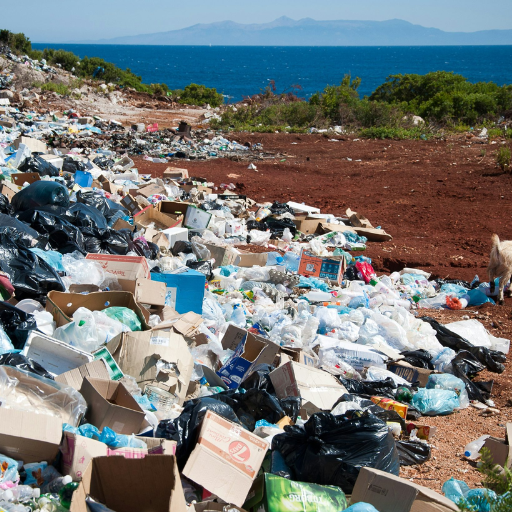
Plastics have a profound impact on the environment due to their longevity and universality. Discarded improperly, plastics pile up in ecosystems, damaging wildlife and marine life through ingestion or entanglement. The manufacturing of plastics also adds to carbon emissions and exacerbates climate change. Microplastics, fine particles formed from the breakdown of plastic, have permeated soil, water, and food systems, which is dangerous for both human and animal life. Continuous dependence on plastics results in the destruction of biodiversity, pollution of natural environments, and overburdened waste management. Steps toward more sustainable solutions in conjunction with improved recycling efforts are essential in countering these environmental issues.
Negative Effects of Plastic Waste
The health, environmental, and economic ramifications of plastic waste are detrimental to society. Environmental pollution by plastic causes the oceans, rivers, and landscapes to be contaminated which results in the death of marine life and other wildlife that consume or get trapped in pieces of plastic. Furthermore, plastic pollution marks the origin of ecosystem decay and biodiversity loss. Current figures indicate microplastic contamination in water, soils, and even air.
From a health perspective: food, water, and air all provide different means of microplastic access to humans. Studies indicate possible associations with microplastics and inflammation, disruption of hormonal balance, as well as many other health concerns. The spending plastic pollution requires on its overflow such as the cleanup processes, and damages to fishing, and tourism are only a few of plastic pollution’s monumental economically driven effects.
Without curtailing the production of plastic, the need to enhance waste management and the need to aid recycling processes, and switching to biodegradable and reusable counterparts, it won’t be possible to attain a sustainable future and minimize plastic waste.
How Recycled Granules Can Help Reduce Waste
The importance of recycling granules cannot be overstated since these materials aid in the reduction of waste while serving as a substitute for virgin materials. In my opinion, their utility helps in mitigating the need for new plastic, thus reducing energy consumption and greenhouse gas emissions. Also, they help reduce the waste that is bound to be dumped in oceans and landfills, as they repurpose waste plastic and help in the circular economy. Enhanced recycling techniques coupled with broader utilization of these materials in manufacturing can greatly diminish environmental pollution and ensure healthier surroundings for the generations to come.
Innovations in Biodegradable Plastic Granules
In my areas of interest, there have been major developments in the last few years about plant-based materials like polylactic acid (PLA) and polyhydroxyalkanoates (PHA) granules. Research shows that these granules are now being designed to degrade within natural surroundings like soil and water without leaving harmful microplastic traces. Further, companies have turned their attention to making the production processes of these materials more affordable and easier to scale for packaging and agricultural sectors. Such advancements help in countering the impact of conventional plastics and their lasting effect on the environment.
What is the Manufacturing Process of Plastic Granules?

Recycling has become one of humanity’s greatest services and it’s capable due to the ease of granule form plastics as it’s a low-grade material. Solid waste and primary materials that range from medium to high grade can be found all around us. Once collected, this waste undergoes automated sorting. Each piece of granules then needs to be separately cleaned from impurities like metals, fabrics, and so forth. Besides the shredding stage from which only shavings are left, everything is done at the same time. The latter is melted in a controllable environment so the polymer mass is uniform. Depending on the future use of the granules, additives like colorants or stabilizers can be integrated at this stage as well. Afterwards, the material is put through an extruding machine which results in molten material that is put into a cooling chamber while being sectioned into small strands. The final stage is where the tiny pieces become granules that are ready for low-grade plastics as they aid in fuel and aid the reduction of our waste.
Steps in the Production Process
- Collection and Sorting
The initial stage focuses on gathering plastic waste or raw materials. These materials are sorted by type and quality to ensure compatibility during the recycling or production processes.
- Cleaning and Shredding
Plastics are thoroughly cleaned to remove contaminants such as dirt, labels, and residues. Following this step, the plastic pieces are shredded into smaller fragments to make melting easier.
- Melting and Filtering
Shredded plastic is subjected to melting at precise temperatures to yield a homogenized polymer mass. During this phase, a filtering process is often conducted to eliminate impurities and inconsistencies that may persist.
- Addition of Additives
Depending on the intended application, various colorants, stabilizers, or performance enhancers are mixed with the molten plastic to form granules.
- Extrusion and Cooling
Molten plastic is extruded into long strands, which are cooled using air or water until they solidify.
- Cutting into Granules
Strands that have cooled down are cut into small, uniform granules. The granules can now be transported and reused in manufacturing a variety of plastic products.
This procedure is achieved in a quick way; however, it also promotes efficient recycling, reduces environmental waste, and supports sustainable manufacturing processes for plastic materials.
Differences Between Virgin Plastic and Recycled Granules
- Material Purity
- Virgin Plastic: Exhibiting high mechanical properties, virgin plastic is free of consistencies as it is produced from raw petrochemical feedstocks.
- Recycled Granules: Contain minor inconsistencies depending on the sources of plastic and how efficient the recycling process is.
- Mechanical Properties
- Virgin Plastic: Having no prior breakdown, supreme quality uniformity, striping of mechanical strength and durability translates to sine dualas being dryed previously.
- Recycled Granules: Due to thermal and mechanical destruction emitted during the recycling process of plastic, there may be a minor decrease in tensile strength, elasticity, and impactresistance.
- Environmental Impact
- Virgin Plastic: A contribution to the use of non-renewable resources along with having the highest carbon footprint set of its production.
- Recycled Granules: Is less energy consuming along with reducing the amount of plastic waste, thus being more environmental friendly.
- Cost
- Virgin Plastic: More expensive typically as the cost stays high with the extraction, refinement, and production processes associated.
- Recycled Granules: Because it employs materials that are waste, the cost becomes more energy efficient compared to virgin plastic, therefore being more budget-friendly.
- Applications
- Virgin Plastic: Used in medical equipment, durable packaging, electronics, and food items as they need the highest performance insurance and consitency.
- Recycled Granules: Used in construction materials that require inflexibility alongside their other consumer goods becasue construction uses packaging and industry and has relaxed demands of material inconsistency.
Grasping these differences helps the manufacturers choose a material, based of its characteristics, application, as well as sustainability objectives they hope to achieve.
Advancements in Plastic Granule Manufacturing
Innovations in the last few years regarding the manufacturing of plastic granules have concentrated on improving operational efficacy and the sustainability of the materials used. New sorting methods as well as chemical recycling techniques have markedly enhanced the caliber of granules. These processes provide greater contaminant removal and enable repurposed plastics to approximate the characteristics of virgin plastics, making them adequate for more applications. The application of artificial intelligence and machine learning at production sites has also turned many of these facilities into energy and waste optimizsed systems, which streamlines operational processes.
Bio-based granules made from renewable resources such as corn starch and sugarcane are also emerging as more environmentally-friendly substitutes for conventional plastics. Moreover, the development of new advanced compounding technologies makes it possible for producers to tailor mixtures with desired attributes for high performance automotive and aerospace industries. These changes not only increase material durability but also allow companies lower stringent ecological requirements and strengthen corporate sustainability targets.
References
Frequently Asked Questions (FAQ)
Q: What is the current recycled plastic granules market size?
A: The recycled plastic granules market size is expanding rapidly due to the increasing demand for recycled plastic products and improved plastic waste management practices. The market research indicates significant growth potential, driven by the need to use recycled plastic granules in various industries.
Q: How are HDPE granules significant in the plastic granules market?
A: HDPE granules are crucial in the plastic granules market as they offer durability and versatility. They are widely used in plastic packaging and other applications, contributing to a significant share of the market.
Q: What are polystyrene granules, and where are they commonly used?
A: Polystyrene granules are a type of plastic pellets used primarily in the production of lightweight, insulative materials for packaging and construction. They are an important component of the plastic granules market.
Q: Who are the leading recycled plastic granules producers?
A: Leading recycled plastic granules producers are those who focus on transforming post-consumer or post-industrial plastic waste into high-quality, usable granules. These companies are at the forefront of innovation in plastic waste management and recycling.
Q: What challenges does the plastic granules market face during the forecast period?
A: The plastic granules market faces challenges such as fluctuating raw material prices, regulatory changes, and the need for technological advancements to enhance the quality of recycled plastic granules. These factors can impact the market during the forecast period.
Q: What opportunities exist in the recycled plastic granules industry?
A: Opportunities in the recycled plastic granules industry include the growing demand for sustainable products, advancements in recycling technologies, and the increasing use of recycled plastic granules in various sectors, including automotive and construction.
Q: How can industries benefit from using recycled plastic granules?
A: Industries can benefit from using recycled plastic granules by reducing their environmental footprint, lowering production costs, and meeting consumer demand for sustainable products. Recycled plastic granules offer a viable alternative to virgin plastic materials.
Q: What factors drive the demand for recycled plastic granules?
A: The demand for recycled plastic granules is driven by increasing environmental awareness, regulatory pressures to reduce plastic waste, and the economic advantages of using recycled materials. These factors contribute to a positive outlook for the market.
Q: How is the plastic granules market segmented?
A: The plastic granules market is segmented by type, application, and region. This segmentation helps in understanding the diverse range of recycled plastic granules available and their specific applications across different industries.
Q: What is the role of post-industrial plastic waste in the production of recycled plastic granules?
A: Post-industrial plastic waste plays a vital role in the production of recycled plastic granules. It provides a consistent and high-quality source of raw material, which helps in producing durable and reliable granules for various applications.

